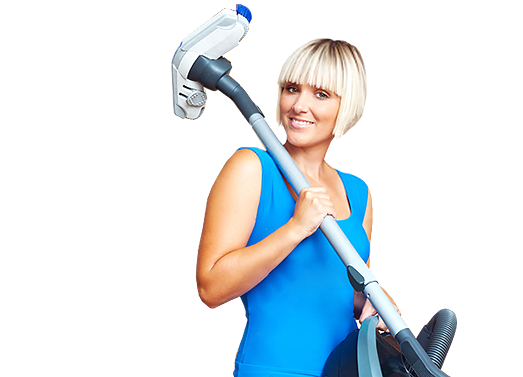Home Harmony: Keeping Dust and Allergens at Bay
Posted on 14/08/2025
Home Harmony: Keeping Dust and Allergens at Bay
Creating a harmonious living space goes beyond décor and style. For families and individuals alike, achieving home harmony means fostering an environment that is both comfortable and healthy. One of the most important--yet often overlooked--aspects of indoor wellness is maintaining good air quality by keeping dust, allergens, and airborne irritants under control. In this comprehensive guide, we'll explore effective strategies to minimize dust and allergens in your home, supporting a cleaner, healthier lifestyle for you and your loved ones.
Understanding the Need for Home Harmony
Home harmony refers to the balance between a pleasing, inviting environment and one that promotes well-being. Unfortunately, modern living often brings an increase in household dust, pollen, pet dander, and other allergens. These substances can cause sneezing, watery eyes, headaches, respiratory problems, and even worsen chronic conditions like asthma. Attaining genuine harmony at home means understanding the sources of dust and allergens and using proven methods to manage them.
What Are Dust and Allergens?
Dust is a mix of tiny particles, including dirt, pollen, dead skin cells, fibers from textiles, and more. Allergens are typically harmless substances that trigger allergic reactions in sensitive individuals. The most common indoor allergens include:
- Dust mite waste and body fragments
- Pet dander (tiny flakes of skin shed by animals)
- Mold spores
- Pollen (often tracked indoors from outside)
- Cockroach droppings
These particles accumulate surprisingly fast, especially in busy households or homes with pets, children, or lots of foot traffic. Taking steps to control dust and allergens helps promote cleaner air and a healthier living environment.

The Hidden Dangers of Dust and Allergens
Not everyone realizes that chronic exposure to household dust and allergens can have significant health effects. Even if you don't suffer from allergies, prolonged irritation can lead to sinus problems, decreased air quality, and general discomfort. Common symptoms include:
- Frequent sneezing
- Itchy or watery eyes
- Nasal congestion
- Coughs or scratchy throat
- Breathing difficulties, especially for asthma sufferers
Children, elderly individuals, and those with preexisting respiratory conditions are especially vulnerable. To achieve true home harmony, it's crucial to address these hidden dangers by maintaining a dust- and allergen-free home.
Strategies for Keeping Dust and Allergens at Bay
While it's nearly impossible to eliminate all dust and allergens, you can significantly reduce their presence with the right strategies. Here are detailed, practical steps to help you create a cleaner, healthier household.
1. Prioritize a Thorough and Regular Cleaning Routine
Consistency is key! Establishing a cleaning schedule tailored to your household's needs greatly diminishes dust accumulation. Focus on these high-impact actions:
- Dust surfaces with a damp microfiber cloth. Avoid dry dusting, which stirs particles into the air.
- Vacuum floors, carpets, and rugs at least twice weekly using a vacuum equipped with a HEPA (High Efficiency Particulate Air) filter.
- Wash bedding and curtains regularly. Bedding harbors dust mites and must be washed weekly in hot water (130?F/54?C or higher).
- Declutter to minimize surfaces where dust can settle, particularly in bedrooms and living areas.
2. Control Humidity and Ventilation
Maintaining optimal humidity levels (ideally between 30%-50%) helps keep dust mites and mold growth in check. Consider these techniques:
- Use a dehumidifier in damp areas such as basements.
- Ventilate bathrooms and kitchens with exhaust fans to remove moisture from the air.
- Open windows when weather and outdoor air quality permit to improve indoor air circulation.
3. Invest in High-Quality Air Filtration
Airborne dust and allergen particles can linger for hours, but a top-rated HEPA air purifier makes a dramatic difference in improving indoor air quality. Place units in heavily used rooms, especially bedrooms and living areas. Remember to:
- Change air purifier and HVAC filters as recommended by the manufacturer.
- Opt for central air systems or portable air purifiers rated for your room's square footage.
4. Address Pet-Related Allergens
Pets bring joy--but also dander and shedding. To reduce allergens:
- Bathe and groom pets regularly, preferably outside or in designated areas.
- Wash pet bedding frequently and vacuum upholstered furniture.
- Keep pets off beds and out of the bedroom, especially if allergy symptoms are severe.
5. Update Flooring for Easier Cleaning
Carpets and rugs trap dust and allergens far more than hard floors. If possible:
- Replace wall-to-wall carpeting with hardwood, tile, or vinyl flooring for easy maintenance.
- Use washable area rugs and launder them regularly to minimize buildup.
- Vacuum and mop hard floors often to remove particles that settle.
6. Pay Attention to Hidden Hotspots
Some areas go unnoticed and are perfect hiding spots for dust and allergens:
- Ceiling fans and light fixtures
- Window sills and baseboards
- Behind and under furniture
- HVAC vents and air returns
- Lamp shades, electronics, and bookshelves
Regularly cleaning these spaces is a simple but effective way to enhance your overall home harmony.
Healthy Home Habits to Reduce Indoor Allergens
Daily habits make a huge difference in controlling dust and allergen levels in your home:
- Remove shoes at the door to minimize the amount of dirt and pollen tracked indoors.
- Store clothing, toys, and linens in closed drawers or closets to prevent dust accumulation.
- Use allergen-proof mattress and pillow covers - these block dust mites and are easily washed.
- Keep humidity under control to discourage dust mites and mold spores.
Special Considerations for Allergy Sufferers
-
Avoid scented candles, aerosol sprays, or strong cleaning chemicals, which can worsen allergy symptoms and reduce
air quality . - Bathe or shower before bedtime to remove pollen and allergens from skin and hair.
- Monitor local pollen counts and close windows when outdoor allergens are high.
- Launder pet and human bedding often, especially during allergy seasons.
Natural and Eco-Friendly Ways to Control Dust and Allergens
If you prefer a green approach to home harmony, try these natural solutions:
- White vinegar and water make an effective cleaning spray for hard surfaces and glass.
- Baking soda can deodorize carpets and fabrics before vacuuming.
- Houseplants like spider plants, snake plants, and peace lilies naturally filter air, though they won't capture dust mites and should be researched for allergen compatibility.
- Essential oils (tea tree, eucalyptus) have antimicrobial properties, but use them with caution and never as a replacement for cleaning.
DIY Allergen-Reduction Checklist
- Wipe or mop floors every few days
- Dust from high surfaces down to the floor (top-to-bottom method)
- Change bedding and launder in hot water weekly
- Replace HVAC filters every 2-3 months
- Use allergen-proof covers on pillows and mattresses
- Clear clutter and regularly wash throw pillows
Choosing Allergy-Friendly Furnishings and Materials
Furniture and decor choices greatly contribute to home harmony:
- Select leather or vinyl-covered furniture instead of fabric, as these are less likely to harbor dust mites.
- Avoid heavy drapes and curtains; opt for washable blinds or light cotton curtains.
- Store books, magazines, and trinkets behind glass or in closed cabinets to keep dust at bay.
- Minimize knick-knacks and decorative pillows, which can collect dust quickly.
Seasonal Tips to Maximize Home Harmony and Allergen Control
Different seasons bring unique challenges for allergy and dust management. Here's how to adapt:
- Spring/Summer: Pollen counts rise. Keep windows closed during peak hours, change clothing after outdoor activities, and shower before bed.
- Fall: Leaves and mold spores increase. Vacuum more frequently and use a dehumidifier.
- Winter: Heating systems may circulate dust. Clean vents, change filters, and use a humidifier to keep air moist and prevent dryness.

When to Seek Professional Help
For some, even the most diligent household cleaning may not keep allergy symptoms at bay. If you or family members experience ongoing or severe reactions, consider:
- Consulting an allergist for testing and tailored treatment plans.
- Hiring professional deep cleaning services for carpets, upholstery, and HVAC systems.
- Getting mold inspections if mold growth is suspected, particularly in basements or bathrooms.
Final Thoughts: Embrace Home Harmony for Health and Comfort
Promoting home harmony is about more than aesthetics--it's about health and quality of life. By keeping dust and allergens at bay, you'll enjoy cleaner air, fewer health issues, and a greater sense of peace in your living space.
Take small, consistent steps using the tips above to achieve a truly harmonious home. Whether you suffer from allergies or simply want a cleaner, more comfortable haven for your family, focusing on dust reduction and allergen control makes every day at home healthier and happier.
Ready to breathe easy? Start your journey to home harmony today by implementing these practical strategies and making your home a true sanctuary from the outside world!
```



